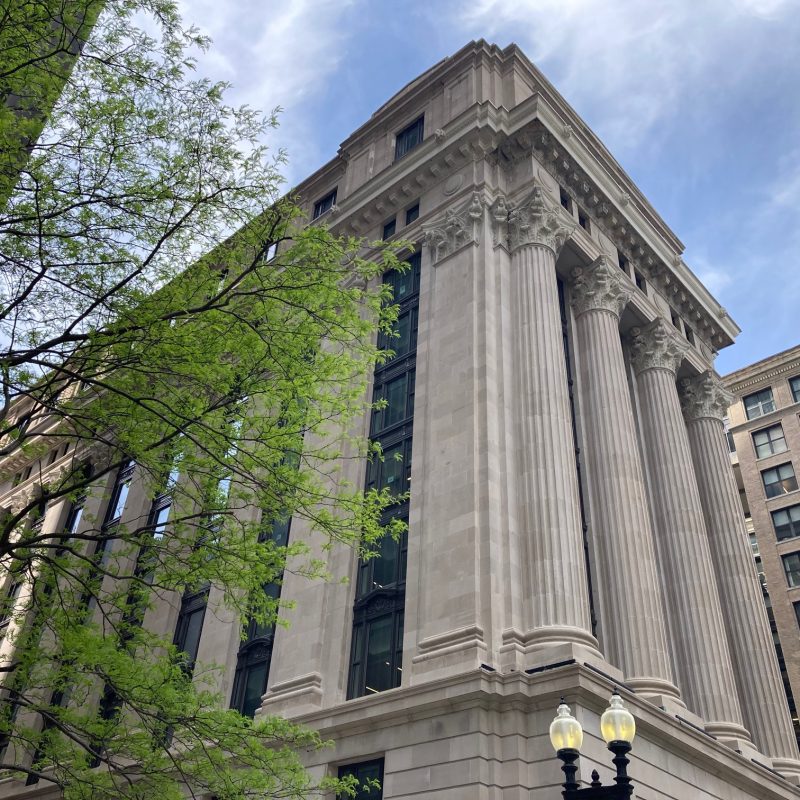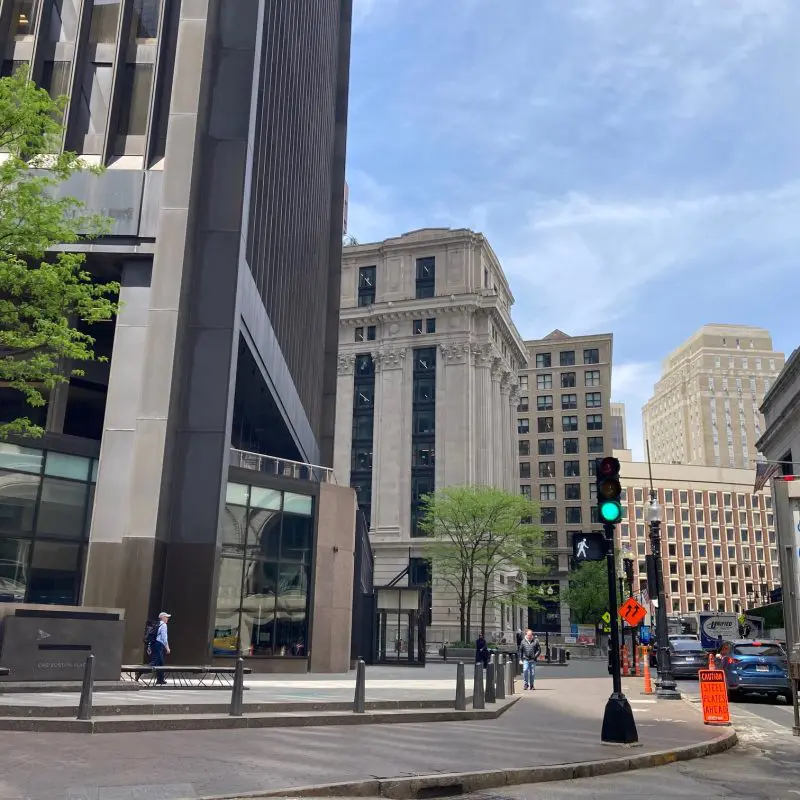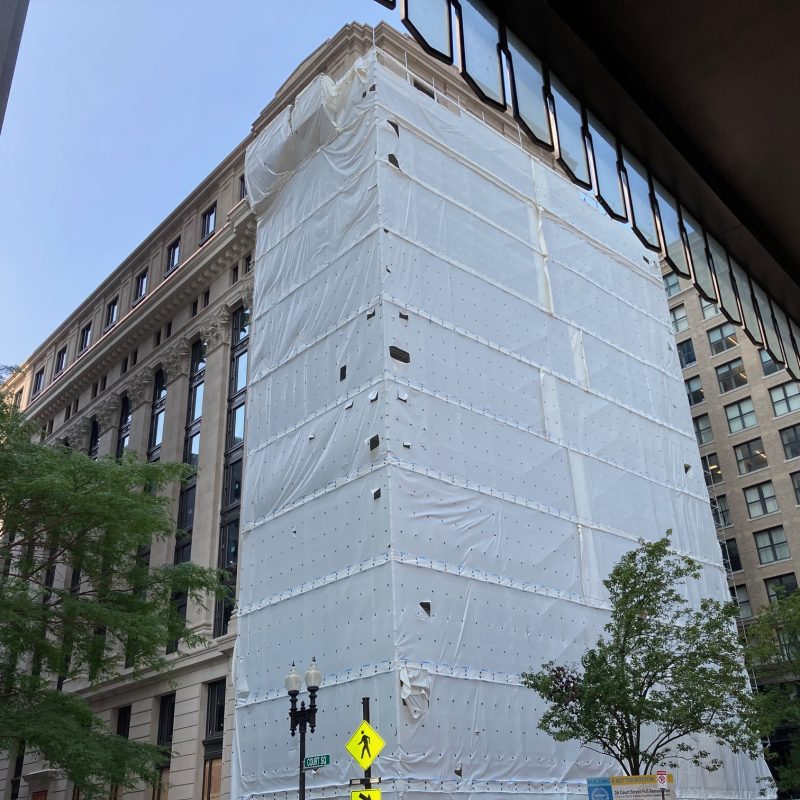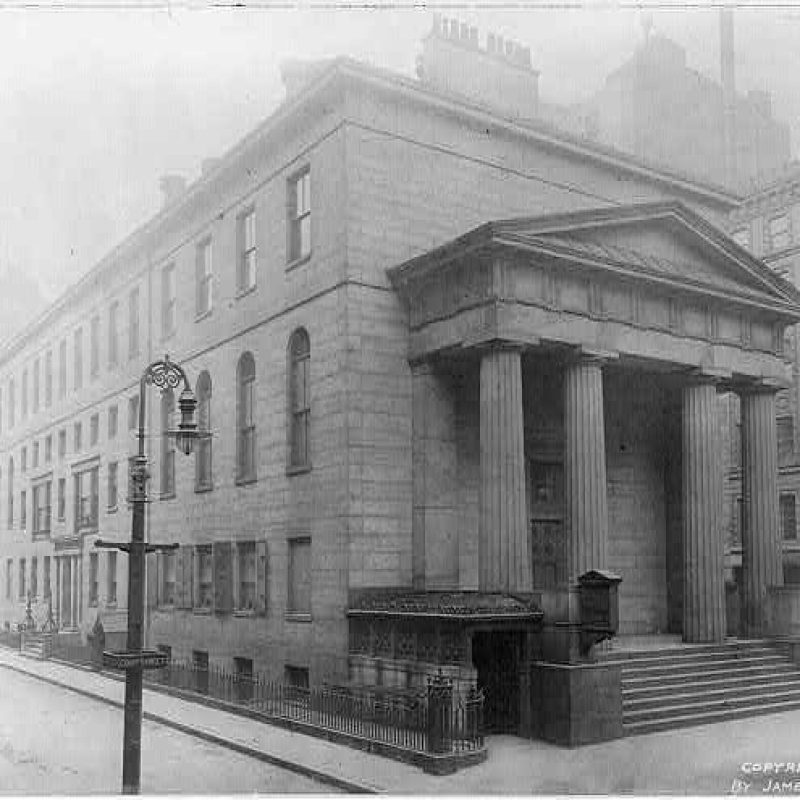Boston’s colonial jail stood in the heart of the town, and was one of four used to imprison those accused of witchcraft in 1692.
More About Boston Jail in 1692, Site of
In 1635, a jail was built in the center of Boston, off today’s Court Street and bounded by School, Washington, and Tremont Streets. Originally constructed of wood, stone replaced much of the structure in only a few years. It was the largest of the four jails used during the Salem witch trials (the others were in Salem, Ipswich, and Cambridge). Until 1708, the street was known as Prison Lane; for the next 80 years, it was Queen Street, and since 1788, it has been Court Street.
Rebuilt in 1704, the jail underwent significant repairs after the Great Fire of 1711. A new building replaced it in 1797, and in 1822, the site was abandoned for a new prison on Leverett Street. The old jail was demolished the following year.
Several innocent victims spent time here. The first three accused of witchcraft, Sarah Good (along with her young daughter Dorothy and baby), Sarah Osborne, and Tituba were held here. Good’s infant died in prison, as did Goody Osborne. Dorothy Good, eventually released in December of 1692, may have been the individual who spent the longest length of time in Boston’s jail.
During the Salem witch trials, prisoners were frequently moved from jail to jail. Many found themselves, at one time or another, in Boston’s jail: Rebecca Nurse, Martha Corey, Mary Easty, John Willard, Rev. George Burroughs, John, Elizabeth, and Benjamin Proctor, Susannah Martin, Bridget Bishop, Alice Parker, George Jacobs, Elizabeth How, Sarah Cloyce, Lydia and Sarah Dastin, Dorcas Hoar, Ann Pudeator, William Hobbs, Sarah Basset, Susannah Roots, Thomas Farrar, Abigail Soames, and Sarah Morrell among them. Two more of the accused died in Boston prison in 1692: Roger Toothaker in June and Ann Foster in December. Mary English was held here, eventually joined by her husband Philip. His wealth gave him the opportunity to rent space in the jailkeeper’s home. Philip, Mary, and John Alden all escaped from prison (helped by sympathetic ministers) and fled Boston to avoid execution.
Boston jail was the setting of many emotional and dramatic scenes in 1692-93. One involved Sarah Good, who had an altercation with servant Mercy Short, sent, it is believed, by her employer Mistress Margaret Thacher to being clothing and food to Mary English. After harsh words were said by Good, Mercy thought she had been cursed. She became afflicted herself, and suffered, off and on, with demonic turbulence for months afterward.
Samuel Gardner Drake, in his 1856 work The History and Antiquities of Boston, shared a prisoner named Fowle’s description of the jail, quoting, “If there is any such thing as a hell upon earth, I think this place is the nearest resemblance of any I can conceive of.” The prisoner said he was forcibly reminded “of the dark valley of the shadow of death.” Drake continues, “It was near the end of October; the night was stormy and cold, and the only bedding he found was a sort of pillow and one blanket. The aperture which served to let in the light and air, served equally well to let in the rain and snow, for there was nothing to keep them out but the iron bars which kept the prisoners in. The outer walls were of stone, and about three feet in thickness, but the cells were partitioned off with plank.”
It was not only accused witches who were imprisoned in Boston’s jail. According to Edwin Bacon’s Boston: A Guide Book, published in 1902, “…incarcerated [were] the Quakers and, later, victims of the witchcraft delusion. Here also, after the overthrow of [royal governor Edmund] Andros in 1689, Ratcliffe, the rector of the first Episcopal church, which Andros so fostered, was confined with his leading parishioners for nine months, till sent to England by royal command.” Held here, too, was the infamous pirate Captain Kidd, later executed in London.
Boston city records state that the site is “believed to be the oldest plot of land continuously owned by the City of Boston.” More than a decade after the jail had been demolished, a new building, home of the Boston Courthouse, was erected in 1836. It was the scene of several pivotal Fugitive Slave trials, including that of Anthony Burns, whose trial triggered riots and protests in 1854. That building was demolished in 1909, although the columns were incorporated into the 1912 building that stands today. Originally the Boston City Hall Annex, today it is the Boston School Committee Building.
26 Court Street





